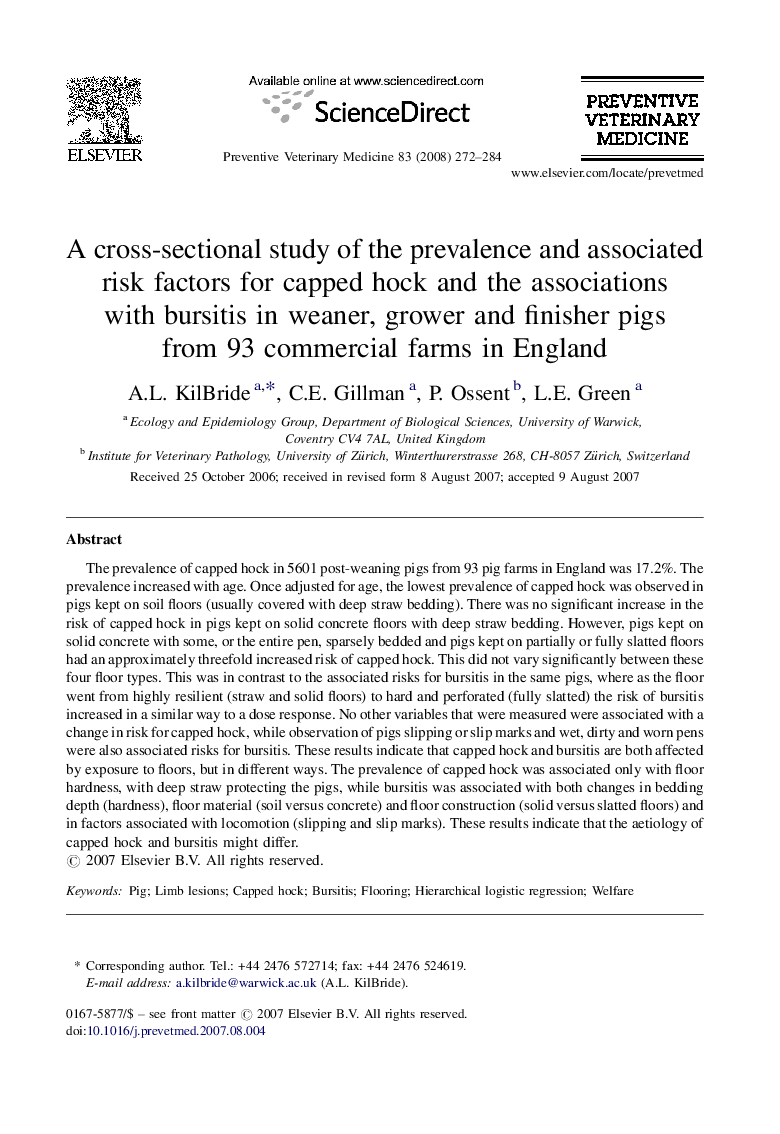| Article ID | Journal | Published Year | Pages | File Type |
|---|---|---|---|---|
| 5794297 | Preventive Veterinary Medicine | 2008 | 13 Pages |
The prevalence of capped hock in 5601 post-weaning pigs from 93 pig farms in England was 17.2%. The prevalence increased with age. Once adjusted for age, the lowest prevalence of capped hock was observed in pigs kept on soil floors (usually covered with deep straw bedding). There was no significant increase in the risk of capped hock in pigs kept on solid concrete floors with deep straw bedding. However, pigs kept on solid concrete with some, or the entire pen, sparsely bedded and pigs kept on partially or fully slatted floors had an approximately threefold increased risk of capped hock. This did not vary significantly between these four floor types. This was in contrast to the associated risks for bursitis in the same pigs, where as the floor went from highly resilient (straw and solid floors) to hard and perforated (fully slatted) the risk of bursitis increased in a similar way to a dose response. No other variables that were measured were associated with a change in risk for capped hock, while observation of pigs slipping or slip marks and wet, dirty and worn pens were also associated risks for bursitis. These results indicate that capped hock and bursitis are both affected by exposure to floors, but in different ways. The prevalence of capped hock was associated only with floor hardness, with deep straw protecting the pigs, while bursitis was associated with both changes in bedding depth (hardness), floor material (soil versus concrete) and floor construction (solid versus slatted floors) and in factors associated with locomotion (slipping and slip marks). These results indicate that the aetiology of capped hock and bursitis might differ.
